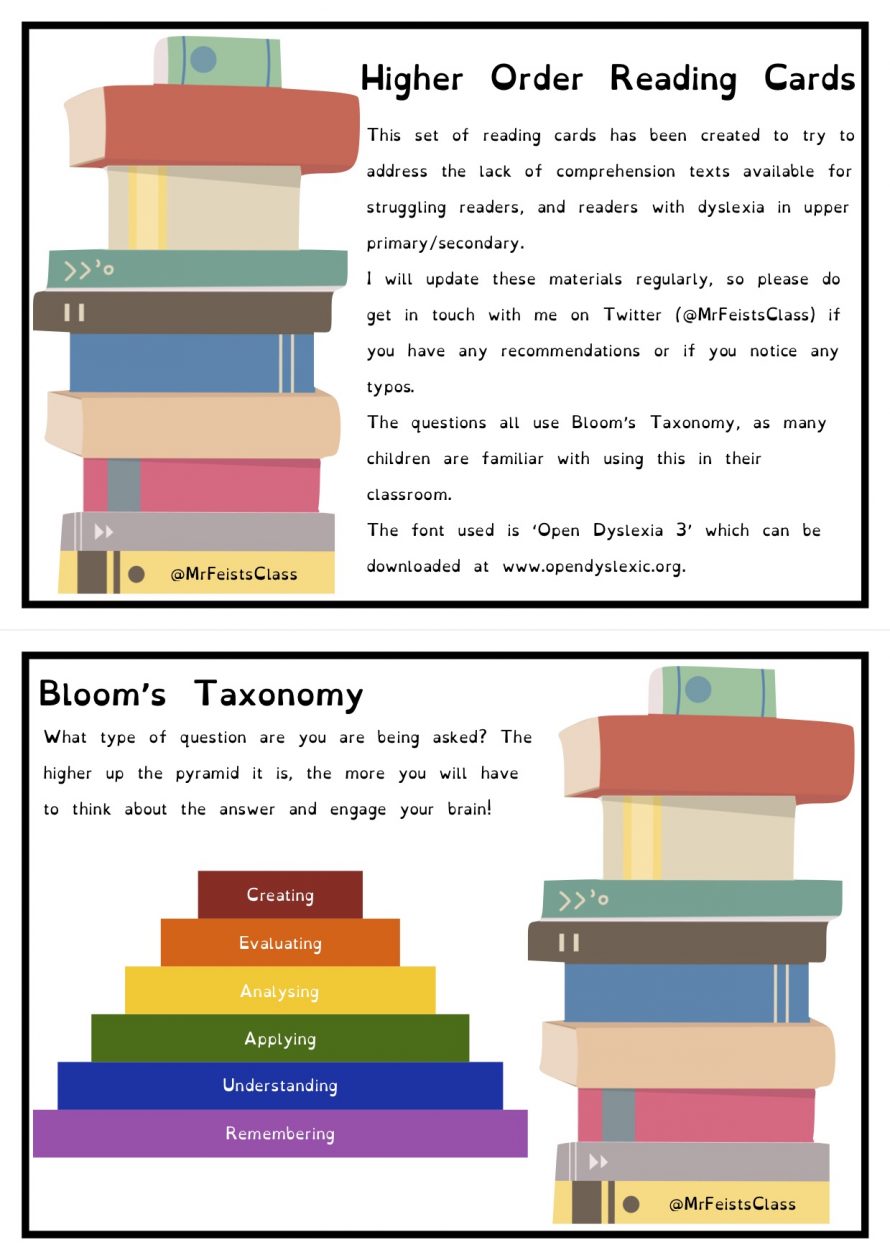Free resource at the bottom of the blog post (but lots of info about it in the post, so still worth a read!) I had hoped to complete all 50 cards before publishing, but with lots on at school and in my ‘other’ life, I’ve taken a slight pause on making the next 26!
Rationale
I set out to make reading cards, as I am always disappointed by the range of ‘non-babyish’ materials that are available to children who struggle with reading, or with engaging in reading. However, I also feel passionately that continually having ‘different’ resources to work on in the class from peers can have an equal off-putting effect. I’ve been reading a lot recently on effective differentiation, and so wanted to think about how a resource would be accessible enough to engage readers who struggle for all sorts of reasons, but provide enough challenge to push higher achieving children. Effective questioning seemed to always be the solution. Each resource uses HOTS questions to provide challenge accessible to all. Having tested these resources in class with a range of learners, and from tester feedback, it has been interesting to note that there was a real equity amongst the majority of learners. Children who often struggle with reading were able to attempt (and sometimes even overtook) other learners in the class. I did support in reading through the text with some children, but then let them attempt the questions independently. I would especially like feedback on how effective this is in your class – do the texts work for the whole class? What can I improve on and do better in the next 25?
For all of the cards, I have used the font Open Dyslexic, as, whilst it doesn’t help with comprehension, it does support learners (like me) for whom letters do sometimes enjoy mixing themselves up on the page – it won’t make a huge difference, but even the slightest change is a positive in my mind. You can download the font for free here.
How the cards work
Truthfully, this is up to you. I have not provided an answer sheet as many of the questions require a personal or creative response – but also, I think the power and challenge of the cards are the discussions that you and your learners can have. Additionally, context and additional information are sometimes available in the questions rather than just the text (sometimes I have omitted any reference to child gender in the text, but have noted it in the cards). This should provide opportunities for developed questions such as ‘ is this child a boy/girl’, can you find evidence in the text to support this (and hopefully, this can bring up discussions about gender bias also). I also would hope that children can use them to make their own HOTS questions.
There is an info card about HOTS questions in case you are not familiar with them. Interesting to note, some of my children questioned why the ‘what is ‘it” question in card 2 is a remembering – I had it as such because I felt the picture was part of the text – but one child said they thought it should be applying as they had to apply all of the context clues to visualise the monster (I’ve paraphrased here, clearly, as I can’t remember her exact words; but I was very impressed by the challenge of her thought) – hopefully this can be something that learners will start to develop and challenge ‘why’ questions are categorised as a way of developing their own thinking.
Thanks
There are many people to thank for their support in making these. Firstly, to @STPBooks for providing two of the texts and images used in the cards. Secondly, I am poor at proof-reading my own work (as you may be able to tell from my blog post…) so, I am very grateful to @KarenDScotland, @vasilionka_lisa, @lovepookiecat, @ScullionGreg, @mamamialia and @LynnRichmond20, for proof-reading for me and for your incredibly detailed feedback: some were pages long and I so appreciate the time that you spent reading through them to help me.
Resources
Due to the size of the PDF, I have had to split these into separate cards – sorry, I know it’s a pain!


